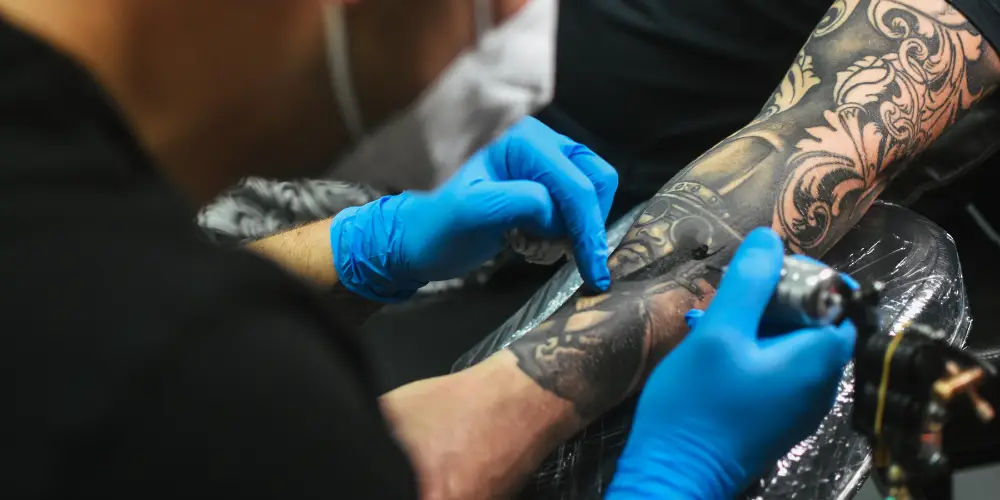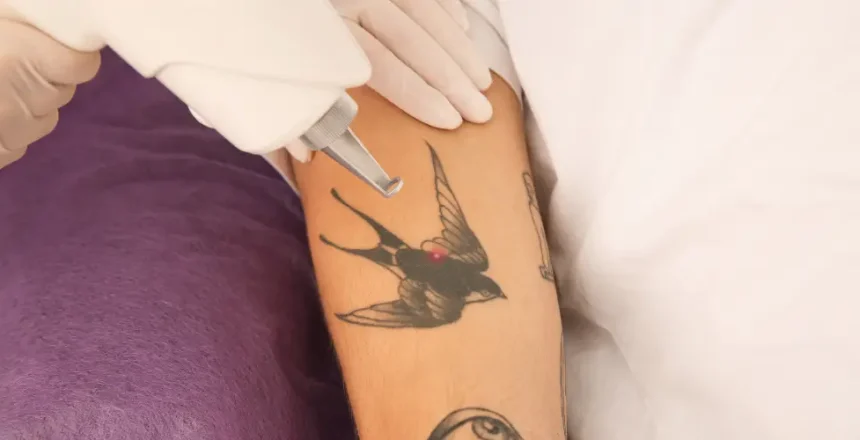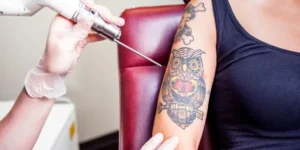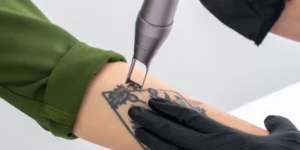Tattoo removal, a journey often embarked upon with a blend of anticipation and apprehension, is a process deeply intertwined with the unique canvas upon which the ink resides: the skin. Skin types, with their varied characteristics and responses, play a pivotal role in the tattoo removal process, influencing aspects from efficacy to healing. This exploration seeks to delve into the nuanced relationship between tattoo removal and skin types, navigating the detailed interplay that crafts each individual’s journey from inked to ink-free.
Chapter 1: Understanding Skin Types in Tattoo Removal
The first step in comprehending the role of skin types in tattoo removal involves exploring:
- Pigmentation Levels: Different skin types have varied pigmentation levels, which can influence laser interactions and efficacy.
- Healing Capacities: The healing capacities and potential for scarring or pigmentation changes vary between skin types.
- Sensitivity: Sensitivity to procedures, pain, and potential reactions can be influenced by skin type.
Chapter 2: The Fitzpatrick Skin Type Scale and Tattoo Removal
The Fitzpatrick Skin Type Scale, a classification system for skin types, becomes pivotal in understanding and predicting potential responses and challenges in tattoo removal:
- Types I-II: Generally lighter skin, which often allows for a broader range of laser options and typically showcases higher contrast with tattoo ink.
- Types III-IV: Medium skin tones, which may necessitate careful laser selection and parameter settings to minimize risks.
- Types V-VI: Darker skin tones, which require meticulous care in laser selection and settings to prevent potential pigmentation changes and optimize efficacy.

Chapter 3: Challenges and Considerations Across Skin Types
Navigating tattoo removal across varied skin types involves addressing specific challenges and considerations:
- Risk of Hyperpigmentation or Hypopigmentation: Ensuring that the laser settings and type are optimized to minimize risks of pigmentation changes.
- Efficacy: Balancing efficacy with safety, ensuring that ink is effectively targeted while minimizing potential risks.
- Pain Management: Managing pain and discomfort, which may be perceived differently across skin types.
Chapter 4: Customizing Tattoo Removal Strategies
Customizing tattoo removal strategies to align with individual skin types involves:
- Laser Selection: Choosing a laser that is suited for the specific skin type, considering factors such as wavelength and pulse duration.
- Test Patches: Performing test patches to assess skin response before proceeding with full sessions.
- Parameter Adjustments: Continuously assessing and adjusting laser parameters to optimize efficacy and minimize risks.

Chapter 5: Aftercare and Healing Across Skin Types
Aftercare and healing, pivotal aspects of the tattoo removal journey, may manifest differently across skin types:
- Healing Duration: Different skin types might exhibit varied durations in healing post-procedure.
- Aftercare Products: Ensuring that aftercare products are suited for the specific skin type and address its unique needs.
- Sun Protection: Implementing rigorous sun protection to prevent pigmentation changes during the healing process.

Chapter 6: Emotional and Psychological Aspects of Tattoo Removal
The emotional and psychological aspects of tattoo removal, while universal, may also intertwine with skin type-specific considerations:
- Expectation Management: Managing expectations regarding duration, potential challenges, and results, especially related to skin type-specific factors.
- Emotional Support: Providing emotional support and reassurance, especially if challenges or setbacks are encountered during the process.
- Celebrating Milestones: Acknowledging and celebrating milestones, even if small, to maintain motivation and positivity throughout the journey.
Crafting a Journey of Informed, Skin-Type-Centric Tattoo Removal
Tattoo removal, when navigated with a meticulous understanding and consideration of skin types, crafts a journey that is not merely about erasing ink, but about honoring and respecting the unique canvas upon which the ink resides. By intertwining detailed knowledge, customized strategies, and mindful aftercare, the path from inked to ink-free becomes a narrative that is deeply personal, informed, and respectful towards the individual’s unique skin type and its specific needs, responses, and characteristics. In the detailed exploration of tattoo removal and skin types, each individual’s journey becomes a tapestry where science, care, and personal transformation intertwine, crafting a story that fades ink while illuminating respect, understanding, and meticulous care towards the skin upon which the ink once resided.




